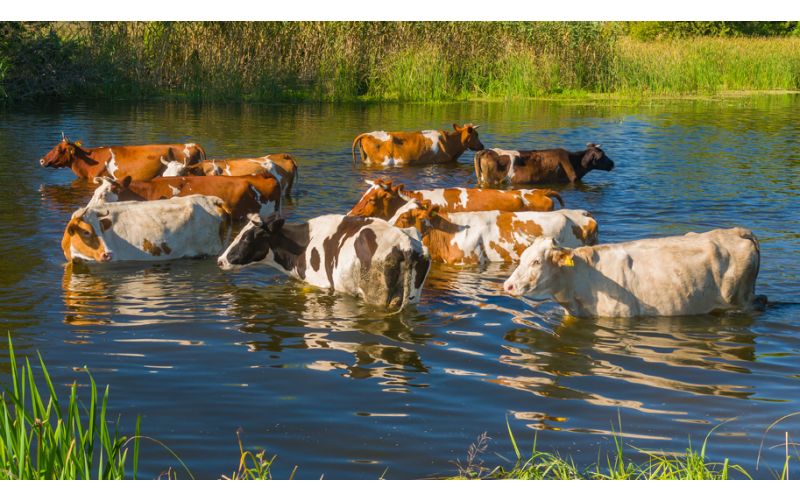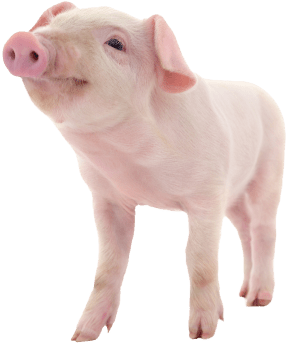
Tips for Dealing with Livestock Heat Stress
|
|
Time to read 4 min
 You are being redirected to QC Supply Pharmacy, where you’ll find a wide selection of high-quality prescription and pharmaceutical products for animals of all sizes.
Enjoy the same great service and expertise you trust from QC Supply.
Click below to continue shopping.
Continue
No thanks, stay on the main site
Powered by
You are being redirected to QC Supply Pharmacy, where you’ll find a wide selection of high-quality prescription and pharmaceutical products for animals of all sizes.
Enjoy the same great service and expertise you trust from QC Supply.
Click below to continue shopping.
Continue
No thanks, stay on the main site
Powered by


|
|
Time to read 4 min
The warm spring weather that has finally arrived in many areas of the country is a reminder that hot summer weather is soon to follow. Hot summer weather means livestock are at risk for heat stress. Heat stress can lead to a host of issues, none of them good. Heat stress can be responsible for breeding inefficiency, lower milk production, decreased feed intake, and weight loss. Heat stress spells trouble for cattle and your bottom line, alike.
Some experts estimate heat stress in dairy cattle is responsible for as much as $5-6 billion in lost milk production each year. That’s some serious money. You can make sure your livestock and pocketbook stay healthy this summer by taking a few simple measures to keep your animals cool when the weather grows hot.
Heat stress is a condition in animals, plants, or humans where too much heat is absorbed, causing stress. Animals typically heat in one of two ways: through conduction or radiation. Conduction is heat gained from another, object to object, by touching it. Radiation, on the other hand, is heat gained from an outside source like a heat lamp or the sun. Heat stress in and of itself is a serious matter, but it can lead to other serious problems, like heat exhaustion and heat stroke which can lead to death.
Producers who know the signs of livestock heat stress will be more likely to provide immediate relief and prevent something even more serious from happening to their animals.
Livestock that don’t sweat may appear to be breathing more rapidly than normal, panting, and drooling excessively. Some animals may be lethargic or unsteady on their feet. For animals that sweat, like horses, keep an eye out for profuse sweating. Additionally, overheated animals may seem to be uninterested in their food.
Some animals are more likely to suffer from heat stress than others. Black or dark-haired animals, or animals with black or dark hide, are more susceptible to heat stress than animals with light-colored hair or hide. Animals that are old, young, or overweight; animals with long coats; animals that are ill or being treated; and individuals or breeds that are typically anxious and nervous are more prone to heat stress than are animals that are calm, fit, and in their prime.
Cool, Clean Drinking Water
Managing water troughs during heat waves will be an important job. When animals are heated, they will drink more water. Make sure to provide fresh, clean drinking water at all times. One waterer per 20 head of cattle is an adequate ratio. During heat waves, you should provide additional drinking troughs near feeding areas, if possible. Locating troughs in shaded areas will help reduce the amount of time animals stand in direct sun and help keep the water cool. An increase in temperatures of 10°-15° F can increase an animal’s water consumption by as much as 250%.
Some research suggests water temperature affects rumen temperature. The rumen temperature affects the blood temperature which, in turn, affects the brain, which controls feed consumption. To prevent drops in feed consumption, provide cool, clean drinking water in more than adequate amounts. Adding electrolytes to drinking water can help boost sluggish animals.
Adequate Shade
Shade reduces the amount of heat animals absorb by radiation. Tree lines are a fine source of natural shade and your pastured animals will seek them out. Barns are another obvious shade provider, especially if they run east-west. Erecting run-in shelters in pastures is another smart solution for smaller groups of animals.
Ventilation
Adequate ventilation is a key element of any livestock-cooling program. Fans are extremely useful tools for moving heat given off by livestock. If possible, make sure your facility has any rigid paneling removed from open sidewall barns. Barn curtains can be used to provide cooling shade while letting air flow freely. Making sure ridge vents are unobstructed is another important measure for cooling barns.
Additional Cooling
Misters and evaporative cooling systems can be excellent cooling devices particularly when combined with fans. Misters and evaporative cooling systems do present some risk of respiratory issues in animals and molding feed if placed near feeders. Additionally, misting and vapor systems should be timed; dairy cows, for example, should not be so consistently wet that udders are dripping. Additionally, misters are best used over concrete areas to reduce the risk of cattle lying down in the mud as this increases the chances of mastitis.
Don’t Over-Crowd
Many facilities take advantage of their space by maximizing the number of animals. This can be risky during hot weather. If you are over 100% density, bringing that number down in hot weather, and/or allowing for 30" of feeder space per animal, will help them keep cool. It will also encourage them to maintain normal food consumption.
Take Advantage of Cool Hours
Another smart idea is to let animals pasture at night when the weather is coolest. Feeding livestock during the cool early morning and/or evening will also encourage them to eat normally and maintain typical production levels. Similarly, if you need to work or move cattle, try to do it at either end of the day when the weather is coolest. When doing so, try to be as calm as possible; stressed animals have elevated heart rates generating more body heat.
While heat stress can be a serious condition, smart livestock management should reduce its occurrence in any herd. How do you manage heat stress in your animals? Tell us in the comment section!